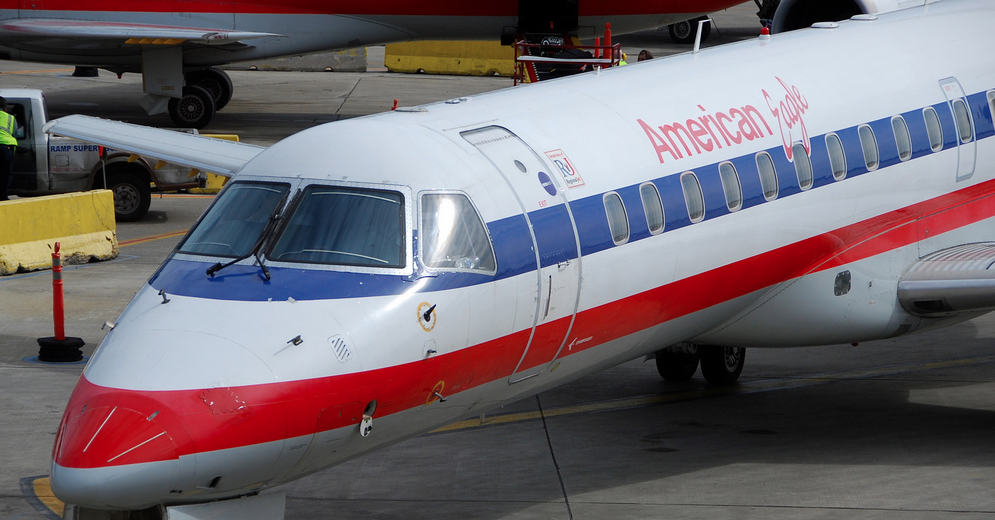American Airlines Tells Parents To Not Put Baby In Safety Seat Because It Will Delay Takeoff
Forbes contributor, former NTSB member and aviation safety consultant John Goglia has the story of a family that was recently traveling on an American Eagle flight from NYC to Columbus, OH.
The parents had paid for a separate seat for their 14-month-old son and had brought him onto the plane in an approved safety seat. The plane had already been sitting idle for about two hours when the cabin crew, making their final check before the long-delayed takeoff, noticed that the baby’s seat was not properly buckled in.
Rather than take the time to fix this easily resolved problem, the flight attendant told the parents that the baby needed to be held in one of their laps during takeoff — in spite of the fact that the FAA has stated that “the safest place for your child on an airplane is in a government-approved safety restraint system (CRS) or device, not on your lap,” and that “Your arms aren’t capable of holding your child securely, especially during unexpected turbulence.”
The child’s dad attempted to debate the issue but tells Goglia he was given the choice of “turning the plane around and being thrown off the plane, or holding our son during takeoff and landing.”
While a rep for AA took some issue with how the parents characterized the incident, she did confirm to Goglia that “properly securing the seat at that time would have been time consuming and delayed the flight’s departure.”
Since the flight had already been delayed for two hours, AA may have been at risk for a hefty fine that charges carriers several thousand dollars per passenger when a plane sits on the tarmac for more than three hours.
Still, even though securing a safety seat is slightly more time-consuming than putting a seat belt on yourself, it still wouldn’t have taken more than a few seconds to fix this problem.
“[H]as the pressure for on time departures so affected the airlines and crew that they would rather risk the safety of an infant by allowing him to fly unrestrained rather than take a few moments to ensure the security of the seat?” asks Goglia.
At the very least, this is a reminder for all parents traveling with children in safety seats to double-check the seat is secured before takeoff.
Want more consumer news? Visit our parent organization, Consumer Reports, for the latest on scams, recalls, and other consumer issues.


